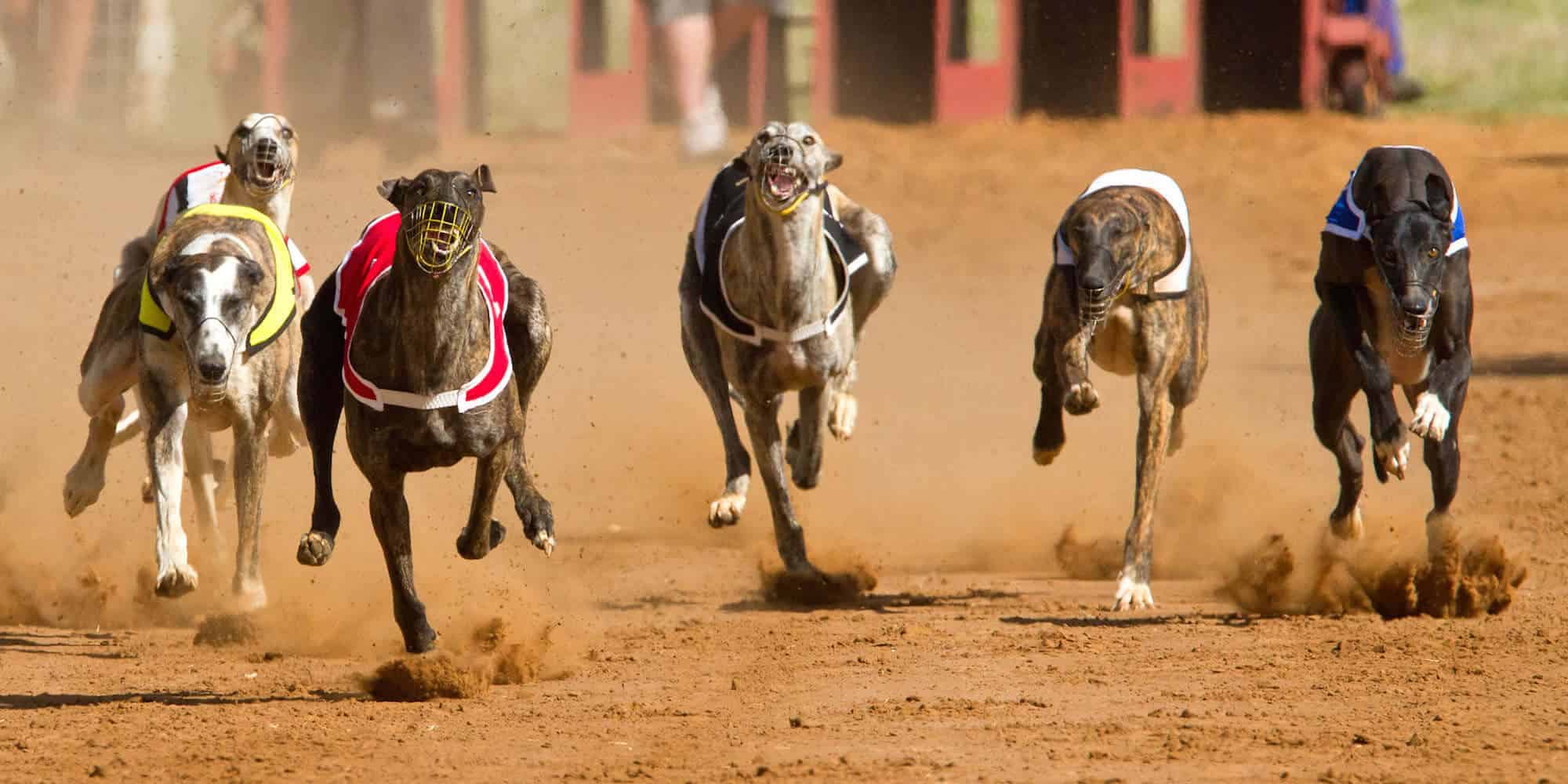Claiming horse races are a unique and vital part of the horse racing industry where every horse participating is up for sale at a pre-determined price before the race begins. These races serve a dual purpose: providing a competitive event and facilitating the sale of racehorses. Race tracks organise claiming races, setting specific conditions under which horses can be bought, which introduces a strategic element for both owners and potential buyers.

Owners enter their horses into these races with the understanding that they could lose ownership before the horse even crosses the finish line. Interested parties must submit their claims for a horse prior to the start of the race, adhering to specific rules and regulations that govern the claiming process. These conditions include establishing an account with the horseman’s bookkeeper and complying with the waiting periods post-claim for racing the horse under new ownership.
Key Takeaways
- Claiming races allow for the purchase of horses at a set price prior to the race.
- Owners and buyers partake in strategic decision-making regarding entering and claiming racehorses.
- Regulatory conditions are in place to ensure fair transactions and competitive balance.
The Basics of Claiming Races
In the world of horse racing, claiming races are a unique mechanism designed to keep the competition fair and to facilitate the sale and purchase of horses among licensed individuals.
Definition and Purpose of Claiming Races
Claiming races serve as an equaliser in the competitive horse racing industry by allowing all horses in a race to be purchased at a predetermined price. This type of race caters to a range of horses, often those that are not at the peak of the hierarchy, providing opportunities for changing ownership under clearly defined conditions.
Claiming Price: Each horse’s price is set before the race. The claiming price functions as a decisive factor for potential buyers, aligning with their willingness to claim a horse and the value they perceive.
Ownership: Much like a marketplace transaction, the current owner risks losing the horse at the price they have consented to, while prospective owners consider it an opportunity to acquire a new competitor for their stable.
Licensed Individuals: Those who wish to claim a horse must be licensed and follow strict procedures that are overseen by the racing authority, ensuring a transparent and regulated process.
Claiming Race Procedures
The process of claiming in a race is governed by a series of regulations that intend both to protect all parties involved and maintain the integrity of the sport.
Before the Race: Interested parties must submit their claims for a horse prior to the start of the race, in accordance with the rules of the hosting racetrack. Claims are typically made by licensed trainers or owners who have a racing account in good standing.
After the Race: Once claimed, the horse will compete for the current owner in that race; however, ownership transfers to the claimant immediately following the conclusion of the race. The new owner assumes responsibility for the horse, although certain regulations may restrict the newly claimed horse from racing under certain conditions within a set period.
Types of Claiming Races and Regulations: There are variants of claiming races with specific rules, such as ones that stipulate a claimed horse must race for a mandated number of days before racing for a new owner, or a rule preventing a claimed horse from running for less than 25% of its claimed price within a set time frame. These regulations are put in place to protect the interests of both the buyer and the seller.
Need Help Beating the Bookies?
Our expert betting tipsters have been taking cash off the bookies since 2014! If you need a helping hand with winning then why not check them out?
Browse Our Tipsters
All Weather Place
Our Expert AW Racing Tipster Focussing on the Place Market With Bets Recorded to BSP
Visit PROFILE
The Outside Edge
Simple Yet Effective Horse Racing Tips from an Experienced Industry Expert
Visit PROFILERoles and Participants
In the world of claiming horse races, the interplay between the participants defines the race’s dynamics. Owners, buyers, trainers, and stewards each play a critical role in the claiming process.
Owners and Buyers
Owners list their horses in the claiming race, setting a price at which any eligible buyer may purchase. The claim must be made and registered before the race begins, usually an hour prior to the scheduled race time. Once a claim is lodged and the race is run, the new owner takes possession of the horse, regardless of its performance in the race. However, the original owner retains any prize money earned from that particular race.
Buyers are individuals or syndicates interested in acquiring a horse. They scrutinise the horses entered in the claiming races and decide which, if any, they wish to claim. The process is secretive to prevent any collusion, and if more than one claim is made for the same horse, a random selection determines the new ownership.
Trainers and Agents
Trainers prepare horses for races and often advise on the suitability of entering a horse in a claiming race. They have a keen understanding of the horse’s condition and race readiness, which is valuable information for potential buyers.
Agents, sometimes hired by prospective buyers, frequently have deep connections in the racing community. They assist in conducting due diligence, advising on claims, and sometimes acting on behalf of buyers during the claiming process.
The Role of Stewards
Stewards play a pivotal role in maintaining the integrity of claiming races. They oversee the adherence to rules and regulations, validate the eligibility of all horses, buyers, and claims made, and resolve any disputes that arise. Should multiple claims be submitted for a single horse, stewards facilitate the aforementioned random selection to determine outcomes of ownership.
Rules and Regulations
Claiming races provide a unique marketplace for the trade of racehorses, balancing competition through defined rules and regulations. These races ensure a fair environment where the claiming price, weight, and distance are crucial in maintaining integrity within the sport.
Determining Claiming Price
Each horse entered into a claiming race is assigned a claiming price, which is the cost at which they can be purchased. The claiming price rates can range significantly, commonly starting as low as £3,600 (£5,000) and escalating to over £108,000 (£150,000). The value is agreed upon prior to the race, and interested parties must submit their claims before the race commences. The British Horseracing Authority establishes the guidelines which stipulate the terms under which a horse may be claimed, aiming to foster fair competition and protect all parties involved.
Weight and Distance Regulations
In claiming races, horses typically carry weight according to their age, gender, and the conditions of the race, which can include penalties for previous wins. The regulations might mandate that claimed horses carry additional weight to ensure a level playing field. For example, opted-out horses in Optional Claiming Races carry more weight.
The distance over which the horses run varies, but the regulatory body outlines the specified lengths for each race at different tracks to ensure uniformity. Common distances in the UK range from 5 furlongs (1,006 metres) to over 2 miles (3,219 metres), with each distance intended to suit various horse breeds and racing styles. The regulations safeguard the sport’s integrity by ensuring consistency in race conditions.
Claiming Race Strategies

In the competitive world of claiming races, participants must deploy astute strategies, focusing on horse quality, market dynamics, and risk management to succeed.
Assessing Horse Quality and Performance
To identify a potential claim, one must meticulously evaluate a horse’s quality and past performance. Key metrics such as race history, training regimen, and any recent improvements or declines in form should be examined.
- Race history: Analyse past race outcomes, focusing on the conditions that mirror those of the upcoming race.
- Training updates: Note any changes in a horse’s training that could affect performance.
- Form changes: Look for signs of progress or regress in recent races that might not be evident to other buyers.
A detailed inspection often reveals subtle indicators that determine a horse’s competitiveness in the claiming race.
Understanding Market Dynamics
The claiming race marketplace is dynamic and requires a nuanced understanding to capitalise on opportunities. Knowledge of current market trends, including pricing and buyer behaviour, is crucial.
- Pricing trends: Observe average claiming prices and fluctuations based on factors such as track conditions, horse age, and pedigree.
- Buyer activity: Take note of frequent claimers and their strategies, as they can influence market dynamics.
Recognising value in the marketplace can guide one’s bidding strategy, ensuring competitive yet prudent financial decisions.
Risk Assessment and Management
Every claim involves inherent risks, but effective management can mitigate potential losses. One must assess the level of investment against the plausible return, considering the following:
- Injury potential: Review the horse’s medical history for any chronic issues or recent injuries.
- Performance consistency: Gauge if the horse’s performance might falter when changing trainers, which can affect its future race prospects.
Taking calculated risks and preparing for various outcomes positions a buyer well within the often unpredictable landscape of claiming races.
Pre-race and Post-claim Processes
In claiming horse races, the pre-race and post-claim procedures are vital for ensuring fair play and correct transfer of ownership. Interested parties must navigate a structured system to register a bid and claim a horse, while thorough checks follow post-race to complete the ownership change.
Claim Submission and Review
Before a claiming race kicks off, prospective new owners must submit their claims. The process often demands:
- Registration: Claimants need to register with the racing authority, providing necessary details to be eligible to bid.
- Bid Submission: The claim must be lodged typically an hour before the scheduled post time of the race, along with the set claiming price.
Once the race has started, stewards review all submitted claims to validate their legitimacy. Only one claim can be lodged per person, and multiple claims for the same horse are sorted in a predetermined manner.
Transfer of Ownership After a Claim
Upon completion of a claiming race where a horse has been claimed, two important events must occur:
- Ownership Transfer: Claimed horses are quickly directed to a designated area — commonly the paddock — where the formalities of transferring ownership are executed.
- Verification: Stewards and racing officials conduct a meticulous review to ensure all claims are in order, finalising the transfer of ownership of the claimed horses.
The post-race process for claim validation and ownership transfer is essential for the integrity of claiming races. It establishes the new owner’s rights and responsibilities for their acquired horse.
Economic and Competitive Aspects
Claiming horse races contribute significantly to the economic and competitive aspects of horse racing. They act not only as sporting events but also as dynamic marketplaces for buying and selling racehorses, providing liquidity and affecting the valuations of horses within this sphere.
The Impact on Horse Racing Economy
Claiming races stimulate trade within the horse racing industry by allowing horses to be bought and sold through the claim process. This mechanism ensures a constant flow of new blood into the sport, with owners able to adjust their holdings based on their financial objectives and competitive strategies. The opportunity to claim a horse prior to the race encourages active participation amongst buyers and promotes earnings through both the sale of horses and potential winning purses.
- Liquidity: The ease of transaction in claiming races facilitates swift changes in racehorse ownership, driving market fluidity.
- Sales and Earnings: Sale prices are preset, while earnings from race successes can make the venture profitable for both sellers and claimers.
Competition Level and Horse Valuation
The quality of horses in a claiming race is often determined by the claiming price, which sets the competition level. This price acts as both a cap to the horse’s value and as an equaliser among the competing horses, making the races notably competitive.
Rules such as the prevention of a horse from running for less than 25% of the claiming price within 60 days post-claim are in place to maintain fair competition and horse valuation.
- Competition Level: Horses compete against others of equivalent value, ensuring an even playing field.
- Racehorse Valuation: Claiming prices range widely, influencing not just individual horse value but also competitive betting dynamics.
Notable Claiming Races and Historical Context
Claiming races have a significant impact on the ecosystem of horse racing, being the initiation point for many legendary horses that subsequently make history on the tracks. Traditionally undervalued, these races play a crucial role in the American horse racing industry.
Famous Claiming Race Winners
-
Seabiscuit: Emerging as an unlikely champion, Seabiscuit’s story is one of the most captivating in horse racing history. This Thoroughbred was claimed and later became an American legend, famously beating War Admiral in 1938 in a head-to-head match race.
-
John Henry: Known as one of the most remarkable horses in North America, John Henry was initially competing in claiming races before becoming a two-time Horse of the Year.
-
Rich Strike: A more recent example, Rich Strike shockingly won the 2022 Kentucky Derby after being originally entered into a claiming race for $30,000, exemplifying the potential overlooked in claiming races.
Historical Significance in Horse Racing
Claiming races serve as a foundation for horse racing in the United States, acting as an equaliser by allowing horses at varying levels of competition to race fairly. These races, prevalent at tracks like Oaklawn and Fairgrounds, provide opportunities for owners to acquire horses that may not be initially valued highly but possess the potential for greatness. It’s the very accessibility of claiming races that has contributed to their enduring presence in the industry.
Identifying Opportunities
Identifying opportunities in claiming horse races involves understanding where to find value and spotting horses that may have more potential than their claiming price suggests.
Finding Value in Claiming Races
In the hierarchy of horse races, claiming races are seen as a platform where savvy investors may find value. The potential rewards of claiming races for trainers and owners hinge on their ability to discern which horses present the best value for their set claiming price. They must conduct thorough research within the racing community and past performance data to analyse opportunities. This goes beyond just recognising a horse’s ability; it also includes reviewing the horse’s condition, consistency, and suitability to race conditions.
Spotting Hidden Gems among Claimed Horses
Optional claiming races offer a different angle for spotting hidden gems. Here, owners can choose to put their horse in the race without the risk of getting it claimed. When they do opt in, it’s essential to ascertain why an owner would take such a risk. Meticulous evaluation and insights can reveal horses that are primed to outperform expectations. Observing workouts, race patterns, and having an informed network are key practices for uncovering these horses that may not have reached the peak of their abilities, thus presenting genuine opportunities for astute claimers.
Racetrack and Venue Variations
Claiming horse races, while sharing a fundamental structure, exhibit notable differences across various racetracks and venues, which in turn affect the dynamics and strategies involved in these events.
Differences among Race Tracks
Each race track has its own set of rules and conditions governing claiming races, substantially influencing how they are conducted. Racetracks may differ in terms of:
- The price range for claiming races, which sets the bar for the class and quality of horses running.
- The eligibility criteria for horses to participate, which affects the pool of potential entrants.
- The timeframe and procedures for the claim submission, which necessitates strategic planning from potential buyers.
For instance, some tracks may offer a broad spectrum of claiming prices, accommodating both lower-level and higher-level claiming races, while others focus on a more specified segment. The claim process can be as simple as a form submission, but the specific rules about the timing and disclosures can vary.
Impact of Track Conditions on Claiming Races
Track conditions are a critical variable in the outcome of any horse race, including claiming races. Divergent weather patterns and surface quality at different venues can affect:
- How a horse performs, considering some horses may have a preference for specific track conditions like turf versus dirt or wet versus dry tracks.
- The strategy of the race, since the conditions can influence a jockey’s approach regarding pace and positioning.
- The valuation of horses before claims, as certain horses’ perceived values may rise or fall based on their past performance under similar conditions.
Tracks with synthetic surfaces may result in fewer cancellations due to weather, impacting the frequency and scheduling of claiming races compared to those with natural dirt or turf. This consistency can also affect the betting market, influencing how punters perceive the stability of form and results at these venues.
Claiming Race Statistics and Records
As one assesses the intricate world of claiming horse races, the due diligence conducted on performance data and the maintenance of records stand as pivotal elements. They serve as the bedrock for understanding historical outcomes and for making informed decisions in purchasing horses through these events.
Critical Analysis of Data and Performance
Performance statistics for claiming races, particularly from the year 2018, offer valuable insights into patterns and trends. One might refer to a chart showing the number of horses claimed, the average sale price, and their subsequent race performance. It is crucial to analyse such data to identify horses that have consistently outperformed their claiming price.
- Average Sale Price (£): A breakdown of average sale prices can illuminate market trends and help to determine if horses are typically being purchased at a value that reflects their performance.
- Post-Claim Performance: Tracking performance post-claim is essential in evaluating the efficacy of the claims made, which can serve as a reference for future claims.
Maintaining Accurate and Up-to-date Records
For the integrity of claiming races, it is imperative to maintain precise and current records. This includes detailed entries of each claim slip filed, the predetermined amount agreed upon for each horse, and any transitions through private sales thereafter.
Records Must Include:
- Date of Claim: The exact date when the horse was claimed.
- Claim Slip Details: The official claim slip documentation, outlining the horse’s sale conditions.
- Purchase Amount (£): The specific predetermined amount for which the horse was purchased, ensuring transparency and adherence to the rules governing claiming races.
References to past transactions are vital; they not only corroborate the existing data but also provide a framework for future transactions, guiding stakeholders through the intricacies of claiming race investments.
Frequently Asked Questions
Claiming races in horse racing are unique in that each participating horse is available for purchase at a set price. Understanding the intricacies of the process is vital for participants and spectators.
What criteria should one consider when selecting a horse in a claiming race?
One should assess the horse’s performance history, physical condition, and the trainer’s reputation. The claimed price relative to these factors helps evaluate a horse’s potential return on investment.
How does the claiming process unfold during a race meeting?
Interested buyers must submit their claim in a secured fashion, usually through the race office, before the race begins. Claims are then reviewed, and ownership is transferred immediately after the race, regardless of the horse’s performance.
What are the implications for an owner if their horse is claimed?
Once a horse is claimed, the original owner relinquishes all rights to the horse following the race, including future purse earnings from that day, but they receive the claiming price set before the race.
What differentiates a maiden claiming race from other types?
A maiden claiming race is specifically for horses that have never won a race. The conditions for entry are designed for horses seeking their first victory, usually against others with similar levels of experience.
Can you explain the purpose of waiver claiming in horse racing?
Waiver claiming allows an owner to enter a horse in a claiming race without the risk of losing it, typically due to the horse coming off a layoff or other specific conditions. It encourages participation while providing a measure of protection for the owner.
In what way are the purse earnings distributed following a claiming race?
The purse earnings from a claiming race are typically distributed to the owner of the horse at the time of the race, regardless of whether the horse is claimed. The distribution follows the racecourse’s usual purse structure.





